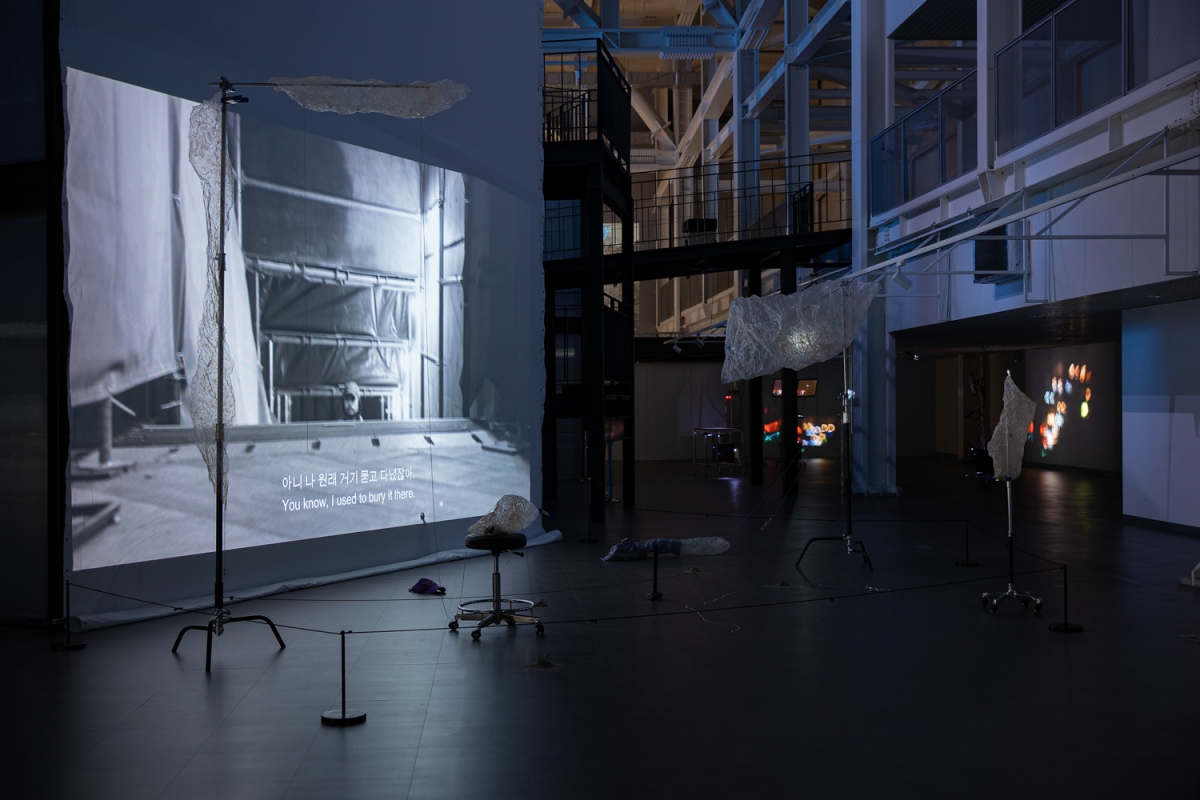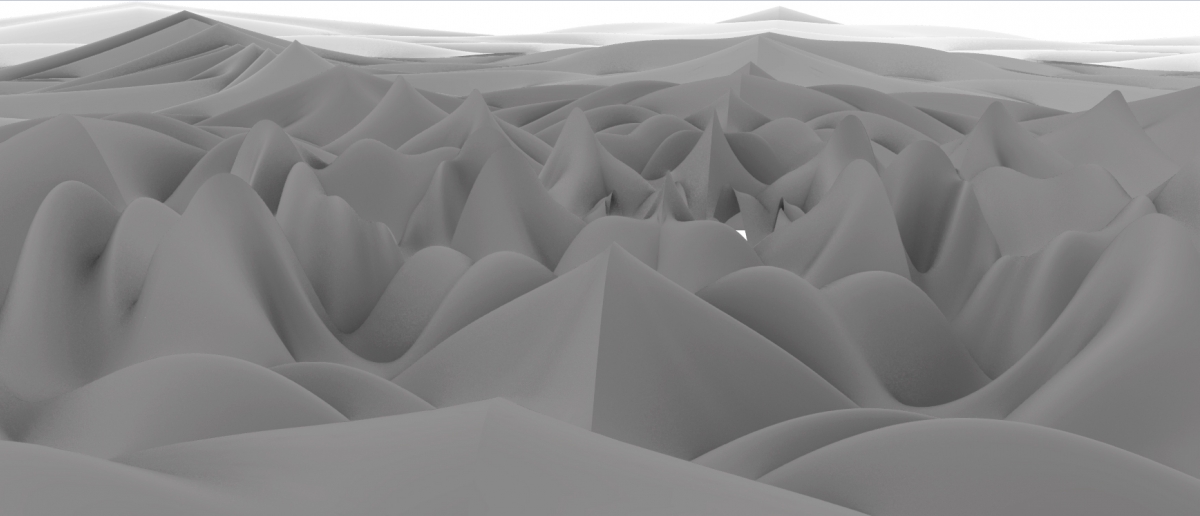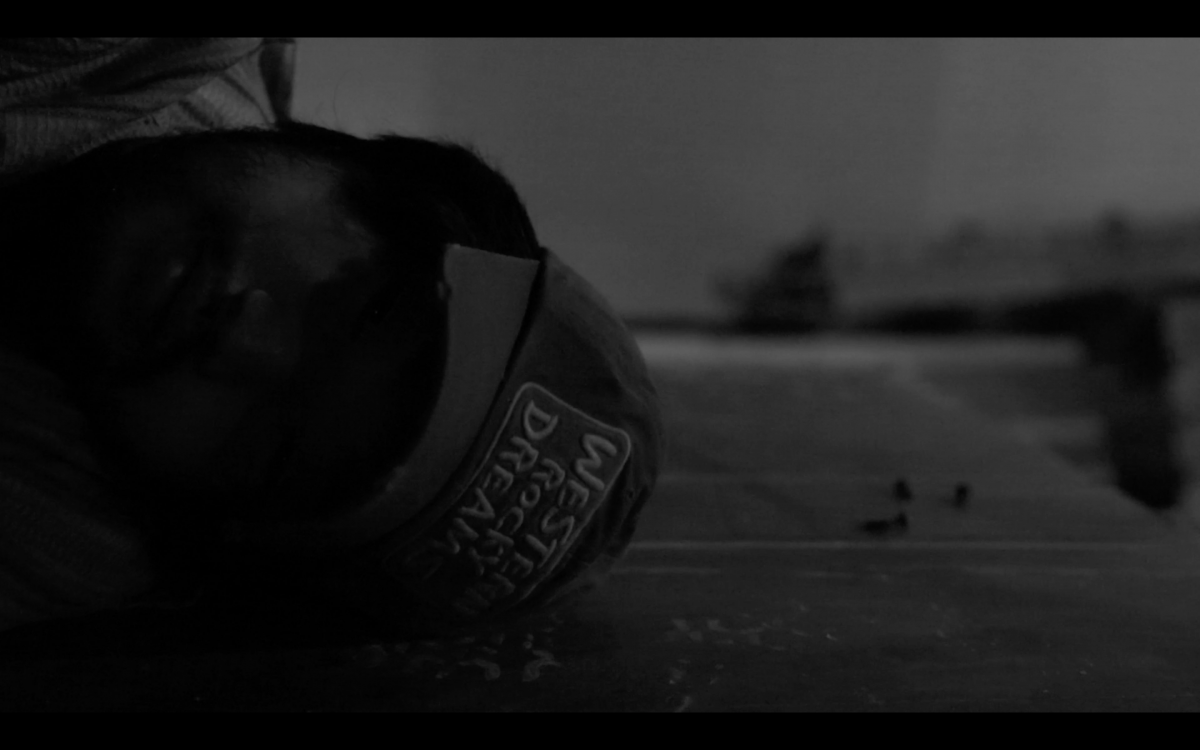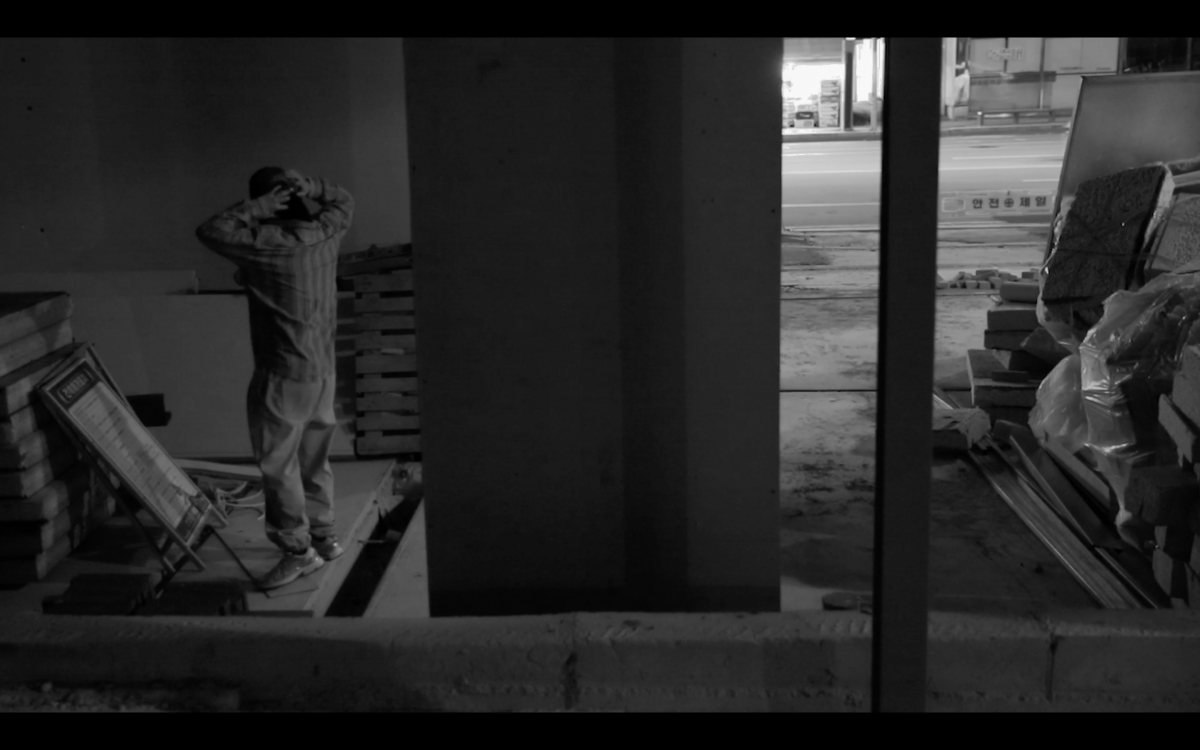
The exhibition ‘Migration to a New Earth Planet’ was held at the Asia Culture Center from the 24th of November to the 5th of December. This exhibition was held to explore the paths along which humanity can coexist with the multivarious beings in this world, and in spaces which are inhabitable due to the irreversible damage caused by climate change and environmental destruction. Eight teams of artists, composed of Shin Jaeeun, Park Jisoo, Chang Eunha, Na Hyesu, Random Group (Jung Chanil · Kim Seunghyun), Kang Minhee, Lee Yoonjae, and Hwang Sunjeong, participated in this exhibition, and through their respective works each team developed and executed works inspired by eight tactics (Re/view, Re/form, Re/search, Re/create, Re/act, Re/animate, Re/discover, and Re/wilding) in search of a new territory. What future do they see in our planet? SPACE interviewed the curatorial director Cho Juhyun for a more detailed description of these ideas.
interview Cho Juhyun curatorial director × Choi Eunhwa
Choi Eunhwa (Choi): I’m curious about the overarching arc of this exhibition concerning matters such as posthumanism, the Anthropocene, and the environment. What was the guiding aim behind this exhibition?
Cho Juhyun (Cho): This exhibition theme and topic came to mind after witnessing responses from the ‘upper classes’ in Korean society to environmental issues, which had arisen as a key topic of contention a few years ago when Korea suffered from the fine dust phenomenon. These citizens, who mostly had received an overseas education and held high-earning jobs, openly suggested that they would rather immigrate to a safer environment, such as those in Europe or the US, to protect their children from Korea’s increasingly harsh environment. This made me wonder, ‘what about those of us who cannot leave, should we simply be left to remain here and breathe the bad air?’ Soon after, the Coronavirus Disease-19 pandemic broke out, and even the most affluent could do nothing but stay in Korea due to the closing of international borders. We all fell into a state shock as we witnessed the failures of systems in advanced western countries, of capitalism, and of globalisation—all things we had long looked up to. We asked ourselves, ‘where can we go now?’
Choi: As evident from the title ‘Migration to a New Earth Planet’, this exhibition seeks a new territory in which humans and non-humans can coexist. How would you define this territory?
Cho: The exhibition title is a metaphor expressing a sense of an earth on which various species (human and non-human beings) cohabit. It is a statement, in that it suggests we must learn how to communicate with other species, and that we need a new strategy in order to achieve this. In other words, this planet is not owned by human beings, we are not its sole master, but each organism and machine have their own discrete worlds—and in this context, I wanted to explore the idea of planet earth through the prism of new kinds of politics, worldviews, laws, and ethical stances where these individual worlds can come to coexist on equal terms.

Choi: Before this exhibition, you curated a number of shows on a similar theme. For example, you were also the curator of the exhibition ‘ANTHROPOCENE Korea × Brazil 2019 ‒ 2021’ (2021) held at Ilmin Museum of Art this January. Did it influence this exhibition in any way?
Cho: I curated some exhibitions under the theme ‘Anthropocene’. As a follow-up to the exhibition ‘Dear Amazon: The Anthropocene 2019’ (2019), in which where artworks primarily by Brazilian artists were on display, I designed ‘ANTHROPOCENE Korea × Brazil 2019 ‒ 2021’ to offer an alternative narrative in contemplation of histories and social situations of the Third World, such as countries in South America and Asia in against the west-centric developments on the Anthropocene debate. Focusing on issues such as climate change and the shared environmental crisis, the Anthropocene debate, which has developed in a west-centric manner, places the burden of responsibility on all humanity without identifying the main culprit, one of imperialistic plundering to the exploitations of our present capitalist age. Hence, from a postcolonial perspective, the previous exhibitions aimed to localise and naturalise the Anthropocene and thereby visualise the Anthropocenic situation, ideas that were not as well-discussed or known in Korea and Brazil. In this exhibition ‘Migration to a New Earth Planet’, however, the emphasis was placed on multispecific living, and the aim was to seek and propose concrete strategies and methodologies via collaborations between artists and researchers. One could say that it was an attempt to concretise my views on the Anthropocene.
Choi: What are the views of the eight participating teams of artists on the Anthropocene?
Cho: Most of the participating artists were born in the 1980s and 1990s. The multispecific sensitivity shared between these young artists was substantially different from that of previous generations. The most distinctive factor was that they did not assume the grand narrative of ‘human vs. nature’ or ‘human vs. animal’; rather, they focused on concrete phenomena occurring at the scene. They analysed the relationships established in each concrete situation and focused their attentions on sketching out speculative worlds from these conscientious analyses. Even when animals, plants, and non-human organisms became the main subject, this did not force them to reflect on human existence or draw a binary opposition between humans and non-humans, but rather to explore the possible alternate understandings and narratives regarding the indeterminate relationship that exists in between.
Choi: Upon entering the exhibition hall, I was first greeted by Shin Jaeeun’s Twins. This video work, which features a human and a pig as twins, distorts the relationship between predator and prey in a humorous and yet solemn way.
Cho: Shin Jaeeun began by constructing a theoretical scenario before executing it as a video work. The similar and yet different relationship between human and non-human was portrayed through this satirical narrative. The story features a pig and a human which were born from ‘Gaia’ ‒ which is a metaphor for mother nature ‒ as fraternal twins. Due to Gaia’s partial favoritism toward the human, however, the two develops different personalities, and their relationship eventually degrades into one in which the human completely dominates and exploits the pig. Then the pig develops xerophthalmia and becomes in need of an eye transplant, and because only the eye from its fraternal human twin is transplantable, the pig hatches a plan to appropriate a new eye from its twin, and the scenario ends with an open ending. It is a story about ‘fraternal strife’. Through this mythical narrative, the story reminds us that the organic life that we humans have treated as mere things are in fact members of a shared community and origin.

Choi: Hwang Sunjeong showcased Tanhamu Project which focuses on fungi species. What is the connection between fungi of such a small scale and earth circulation as a mega system?
Cho: This project proposes going beyond a human-centric perspective and engaging with contemporary plants by transferring the plant’s perspective and communicative systems to the realm of art and technology. Hwang Sunjeong conducted research on the communication between microorganisms and plants ‒ that is, its ‘wood wide web’ system ‒ through which plants exchange signals with one another via the mold growing on their roots. By installing an artificial ‘fungi’-shaped machine, Hwang intervened into the plant-based communicative system by collecting changes of measurement data in the temperature, humidity, carbon dioxide amount, and pressure within the pot and turned them into audio and visual information for easy observation.
Choi: I also noticed artworks on the Anthropocene from an urban architectural perspective. Park Jisoo expressed in Hz Stalagmite the etching process of noise pollution onto the Gwangju terrain as the sedimentation process of cave stalagmites, while Na Hyesu presented an architecture of an extreme situation through Pintment where free breathing is restricted.
Cho: Observing that ‘humanmade civilization is turning into noise pollution and is invading the earth environment at an imperceptible pace’, Park Jisoo etched noise at microscopic frequency (hertz) on the land we are standing on. To achieve this, Park collected various locational-specific sound sources all around Gwangju such as the announcements from the military airbase, the sound of machinery from an auto factory at Naebang-dong, and the sales pitch of a promoter at Yangdong Traditional Market and created a virtual model out of the analyded data. Na Hyesu focused on air quality; drawing upon the lectures on ‘breathing’ by Jeon Chihyung (professor, KAIST) and ‘architecture’ by Jo Hyunjung (professor, KAIST) as context, Na imagined how people would act and what buildings would be built if free breathing were to be restricted and drew an imaginary picture of a world where potential hazards from interpersonal interactions are reduced as every individual is grouped and isolated according to number and social class within a large airtube.
Choi: All artworks seem to begin with a certain preset scenario. The imagined scenario is then either brought to its negative endpoint or is improved by proposing a possible solution. What are the tasks that are left for us as the audience to contemplate and resolve?
Cho: The concluding message of this exhibition is perhaps best expressed in the work of the artist duo Random Group titled Hearts of the City. By imagining ‘a person abandoned on the streets because the land where the keys were buried got developed’, the group narrates a fictional story of a group of people who ‒ being unable to adjust to the new environment ‒ are left behind. Reflecting on issues concerning survival and life, and evolution and natural selection, the artist duo sought to discover a connecting point between land, house, residence, and the environment. Being ‘left behind’ is not necessarily an outcome of natural selection and a failure to evolve, but rather a self-induced state by rejecting the evolution—or it might also be the case that one is isolated and cut off from the ‘network’ called future simply because one was not given sufficient time to adapt. Ultimately, from this exhibition, the audience will come to encounter beings that were invisible or unrevealed due to human dominance over planet earth. It could be the eye of a pig, or the mould growing on a root, or our homeless and socially ostracised fellow humans. If we could understand their worlds, will it remain merely a dream that we will migrate to a new earth planet?







